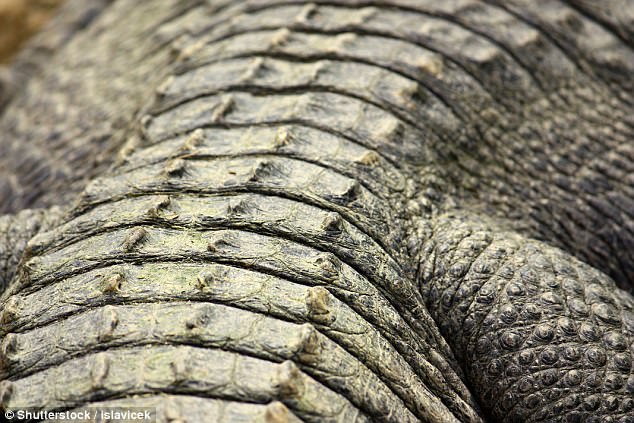While they might not look too similar, reptiles are the closest living relatives of birds, and both groups descended from the same group.
But until now, the way in which scales could turn into feathers has remained a mystery.
Now, researchers have identified numerous genes involved in the development of both adornments.
By turning on and off key molecular circuits at critical stages of growth, the researchers demonstrated the ability to turn scales into feathers.
The finding adds to growing evidence that dinosaurs are the ancestors of our feathered friends.
Researchers from the University of Southern California analysed the complete DNA of developing chicks and alligators to identify differences in key genes involved in scale or feather formation.
They placed these unique chicken feather genes within alligator eggs, carefully turning them on or off underneath their growing skin to reawaken an ancient programming that can turn scales into feathers.
Professor Cheng-Ming Choung, lead author of the study, said: ‘We now have a potential molecular explanation for these hypothesised missing links.’
Both birds and reptiles descended from archosaurs, who dominated the Earth around 250 million years ago.
Archosaurs gave rise to the age of the dinosaurs and, eventually, birds and reptiles as their only living descendants.
Recently, many transitionary dinosaur fossils with full or partial plumages have been uncovered.
Scientists speculate these primitive ‘proto-feathers’ of feathered dinosaurs may have evolved to help attract mates, gave them an ability to better outrun predators and eventually glide and fly.

Exactly how the outer skin and underlying tissues specify feathers and scales – and ultimately the evolution of flight – has remained a mystery.
But this rich evolutionary heritage should be still embedded within all living bird and reptile DNA.
In their study, the researchers identified five genes that are essential for forming modern feathers.

Professor Choung said: ‘Our analyses led to the identification of five morpho-regulatory modules that are essential for modern feather formation.
‘We propose these modules may originally evolve as different strategies for better adaptation.
‘Eventually, the integrative combination of five morpho-regulatory modules achieves the highly successful feather architecture today, allows the bird class to claim most of the open sky as their ecological niche.’
These genes lead to the budding and elongation of appendages, hair follicles, skin cells, feather formations called barb ridges and specific types of their main protein, keratin.
Some molecules could only induce one of the five criteria.
The Sox2 gene, for instance, can turn on feather budding and totally inhibits scale formation, while Grem1 can induce barb like branching.
Professor Chuong explained: ‘Other molecules, such as retinoic acid or Sox18, have a greater ability to induce scutate scales to form feather like skin appendages.
‘These feather-like appendages display all five criteria defining feathers, suggesting they act at a higher hierarchical level in this evolutionary pathway.’

These master regulators may have been the very first genes to adapt during ancient archosaur evolution and gain a newfound ability toward the making of today’s complex feathers.
Professor Choung added: ‘These results show different perturbations cause different levels of scale to feather conversion, implying that scales have the capability to form feathers given the proper molecular signals.’












